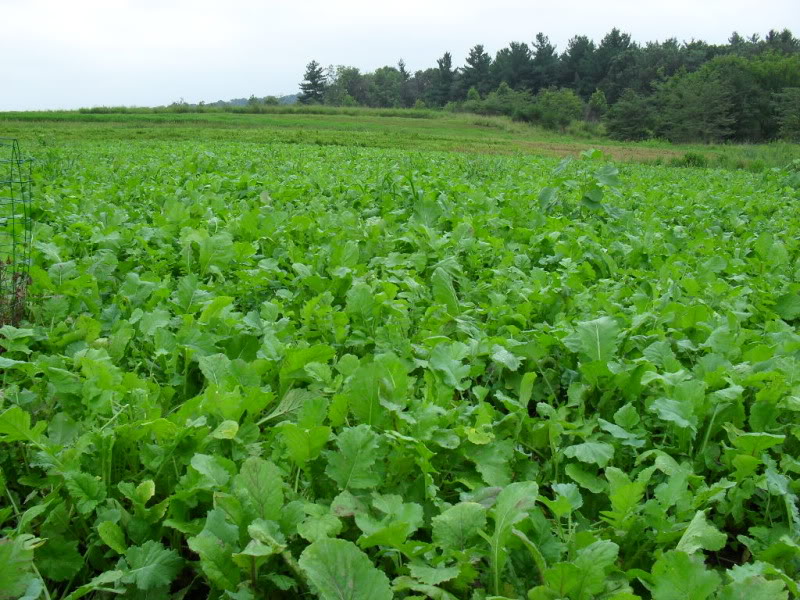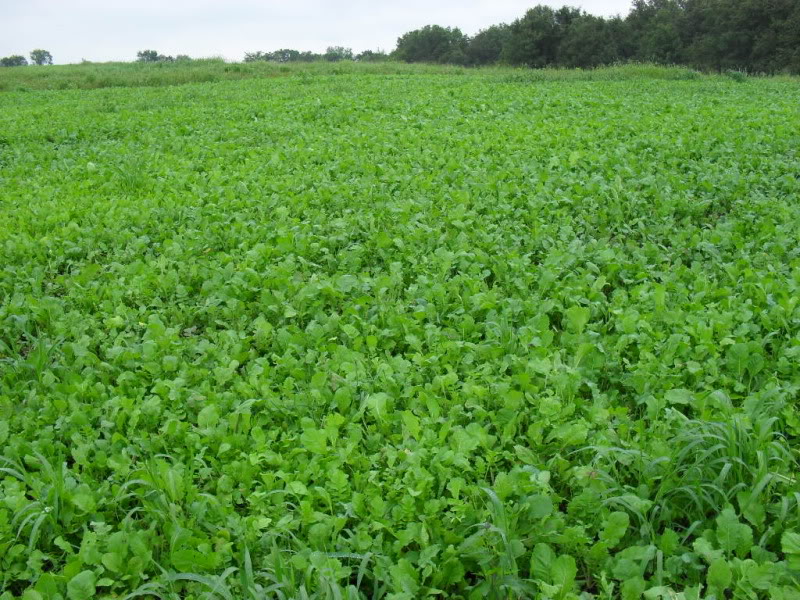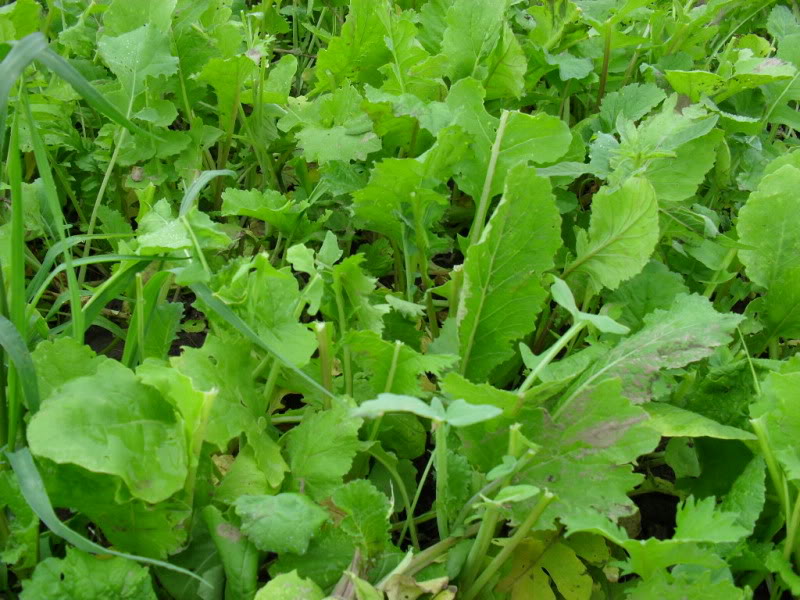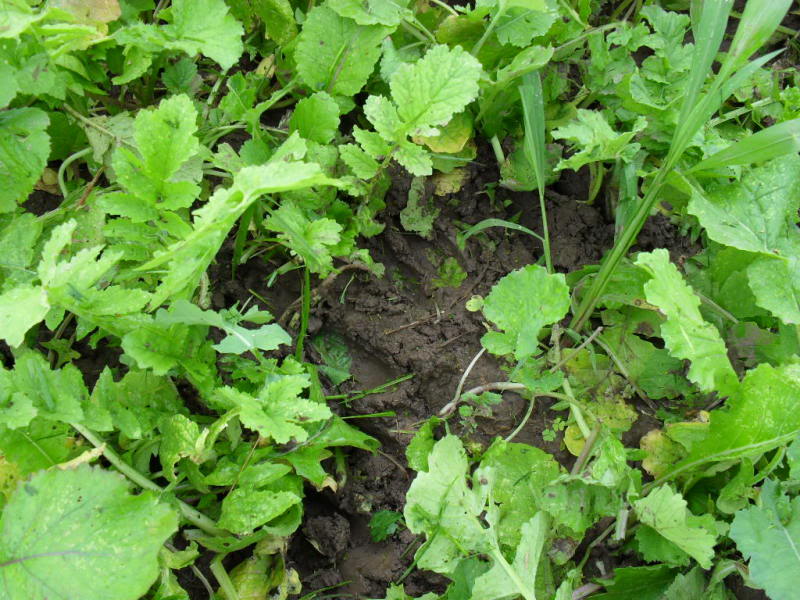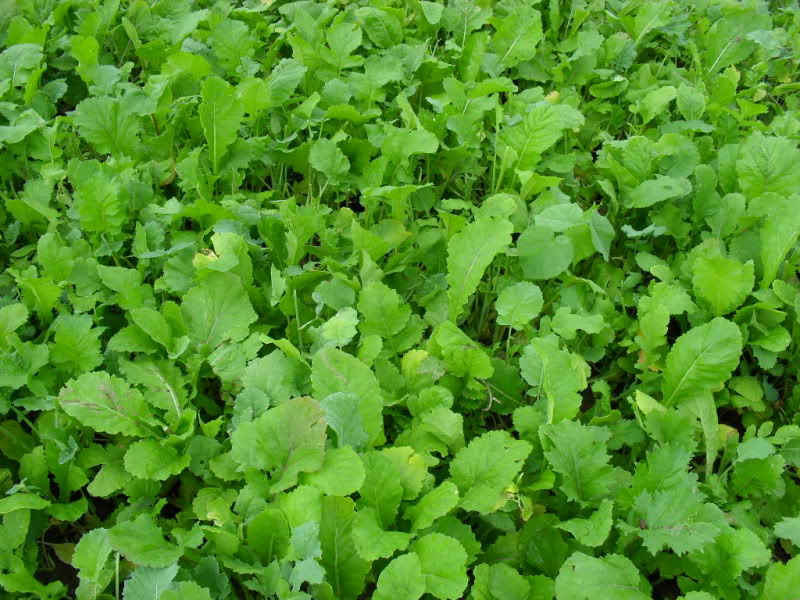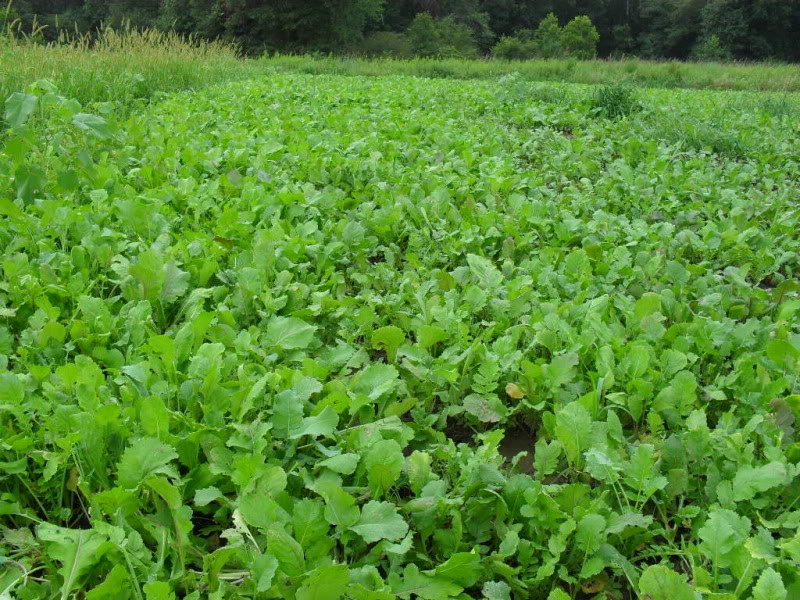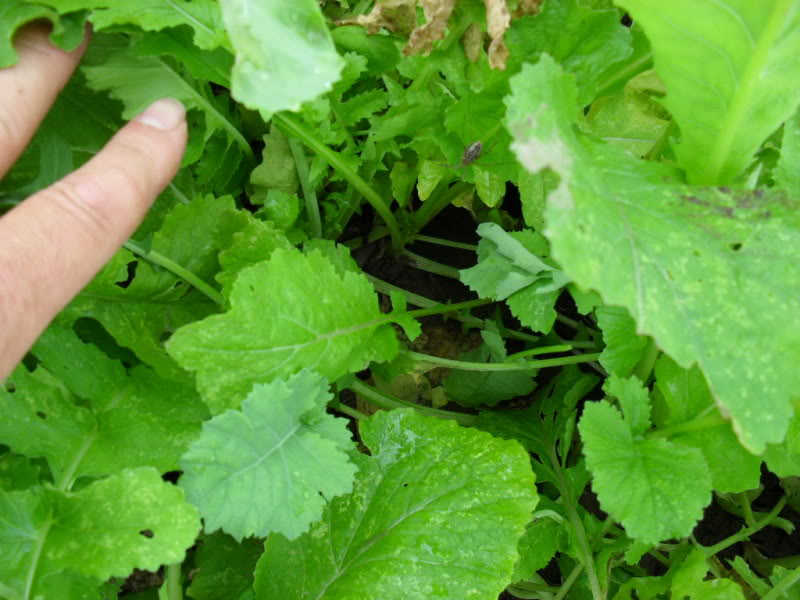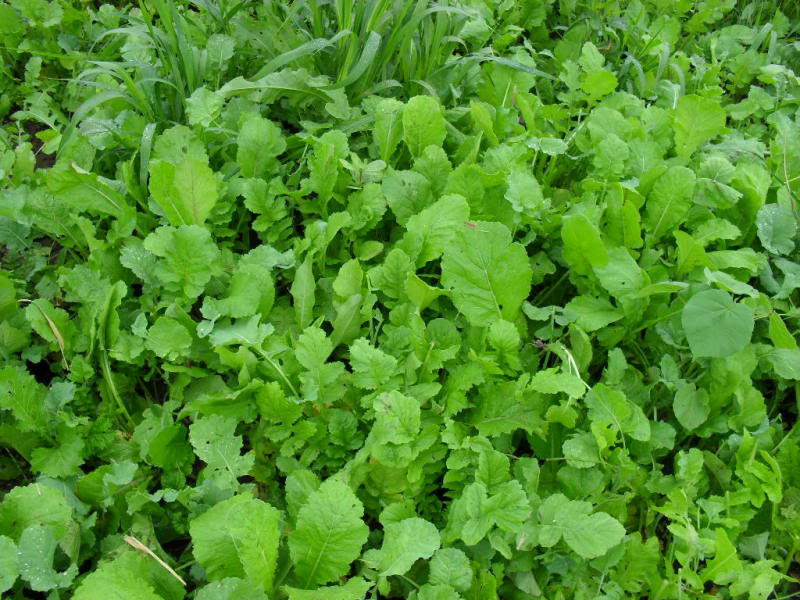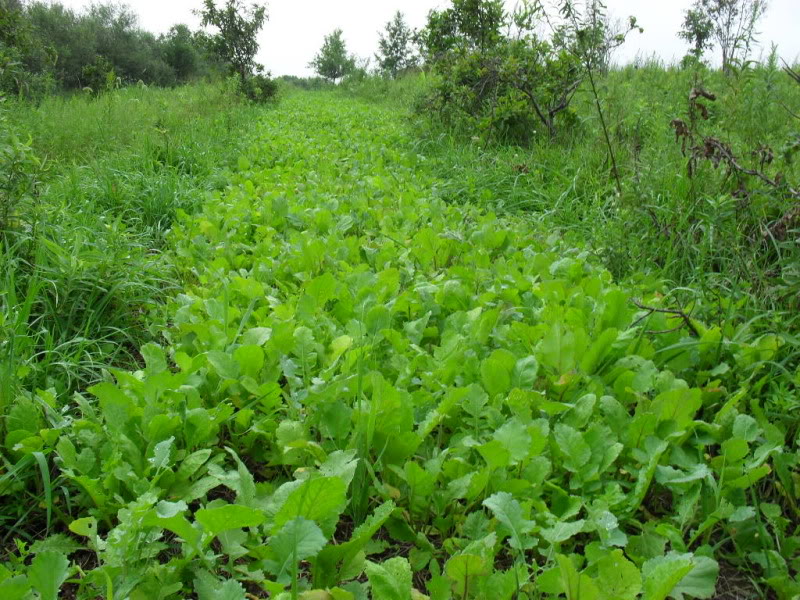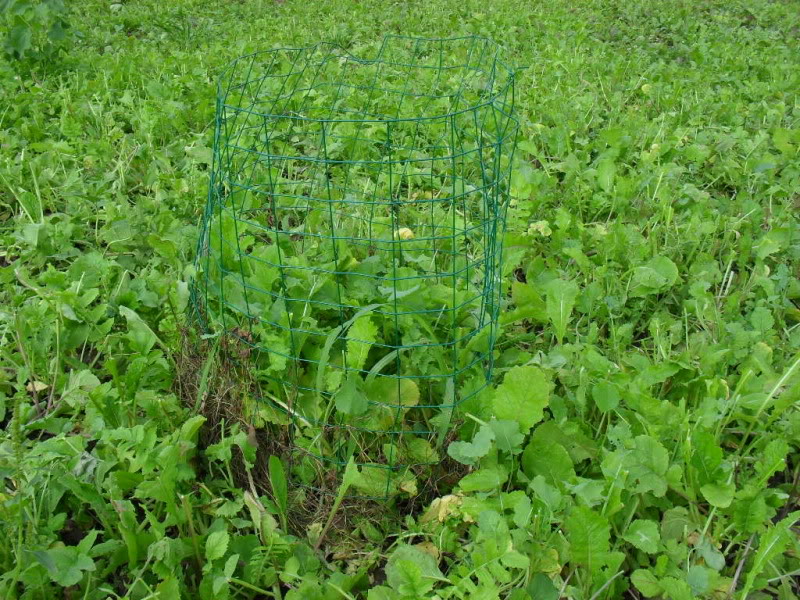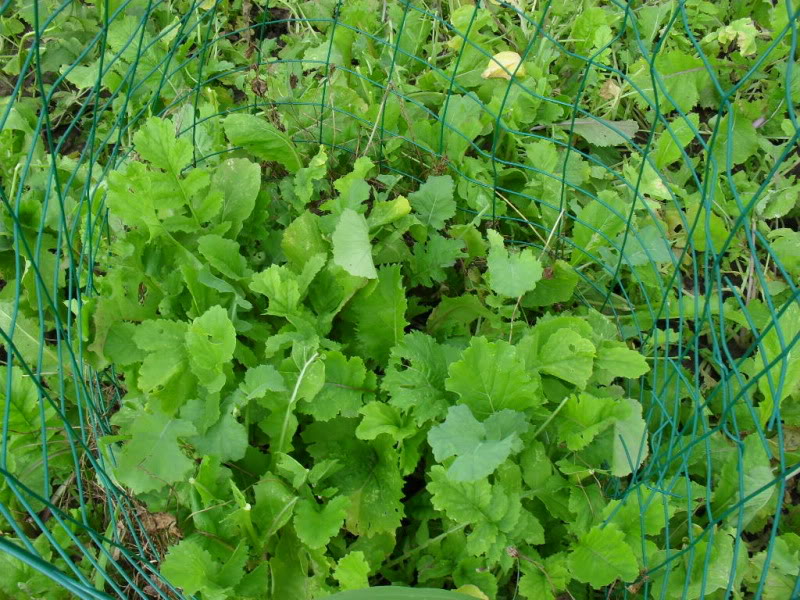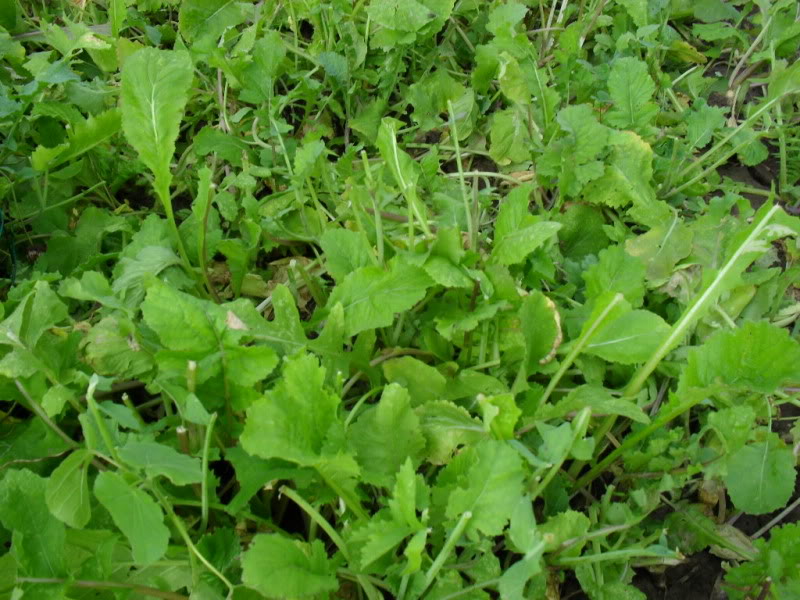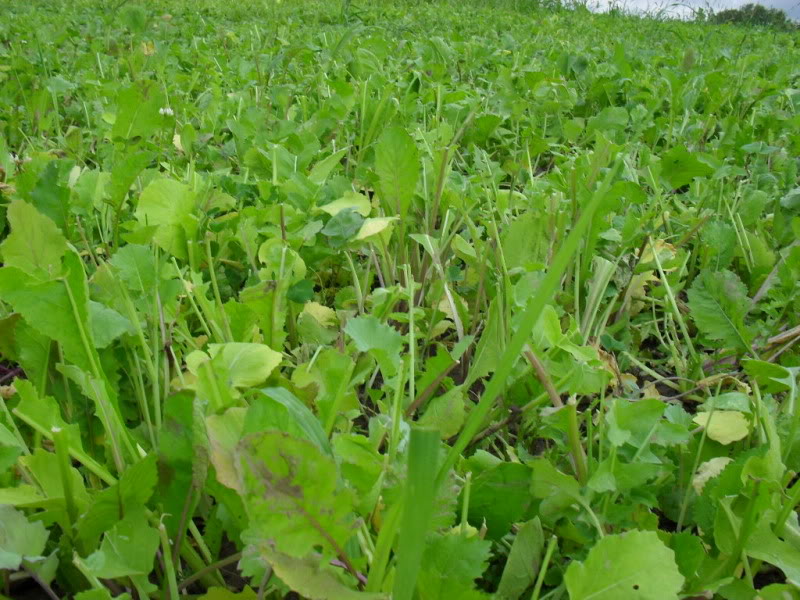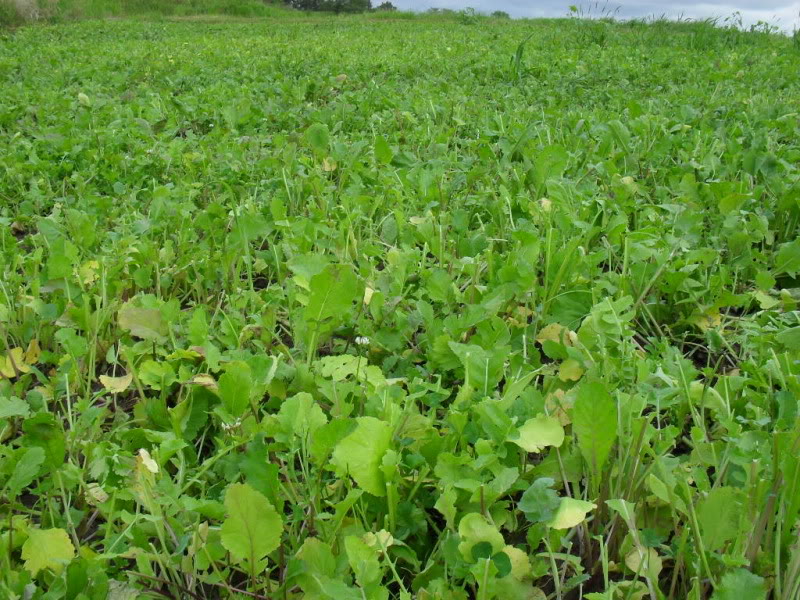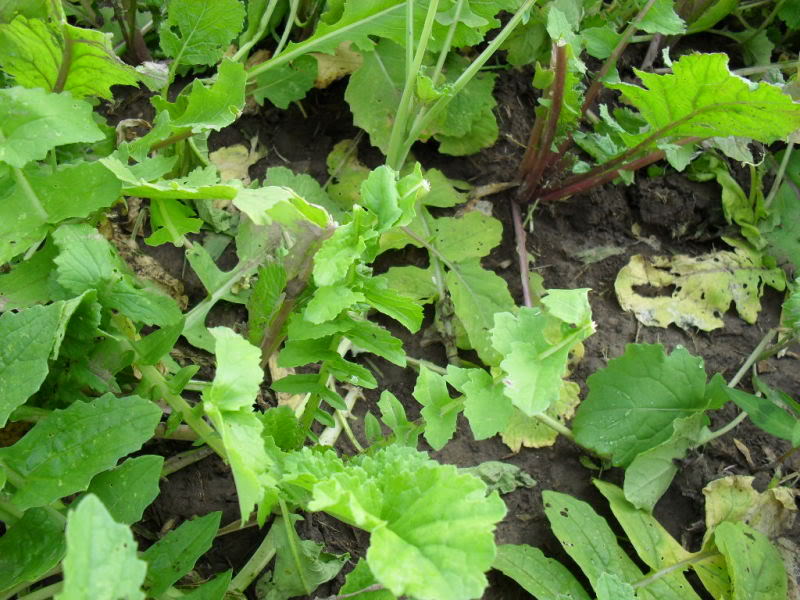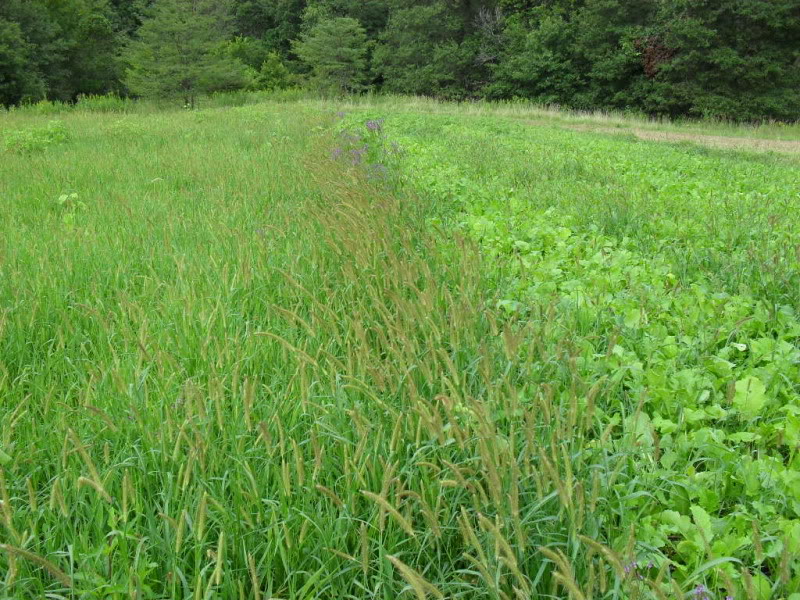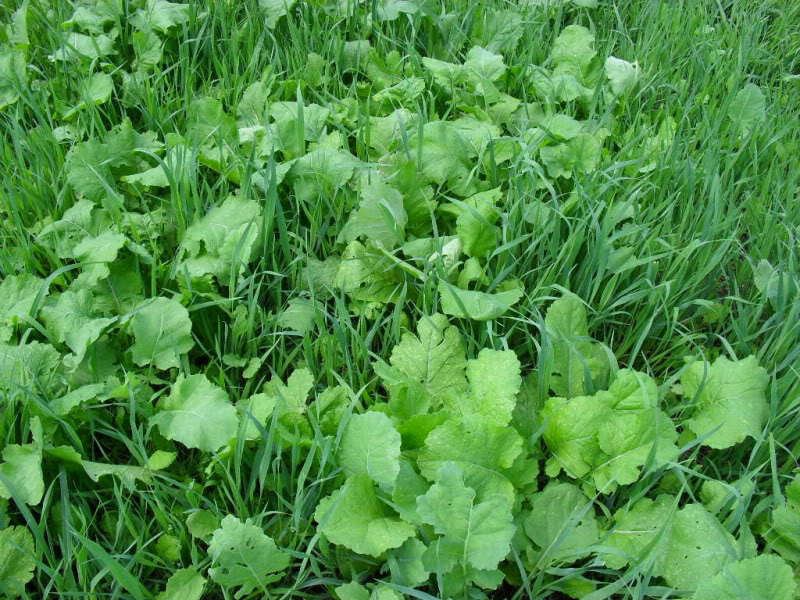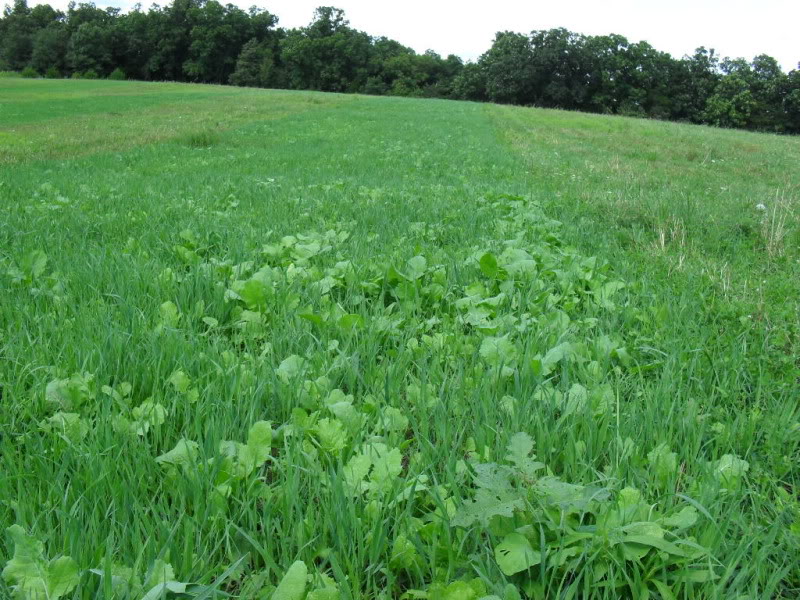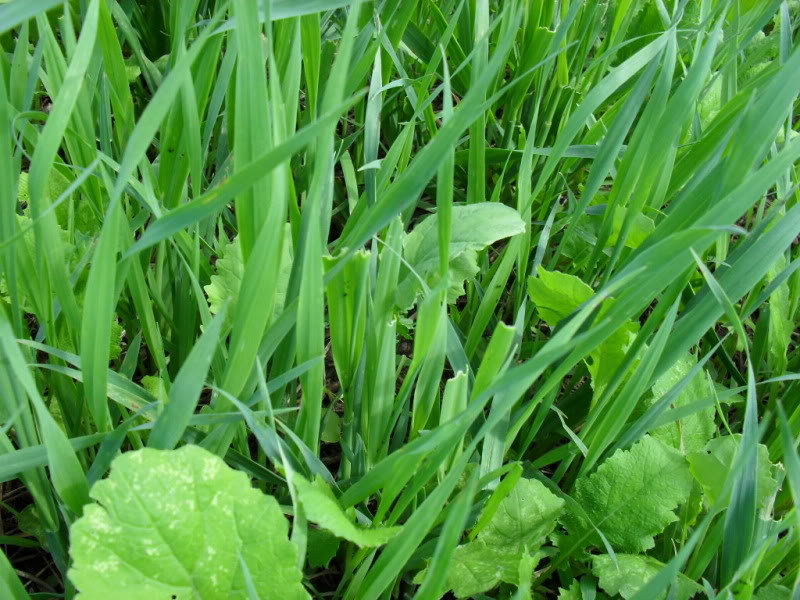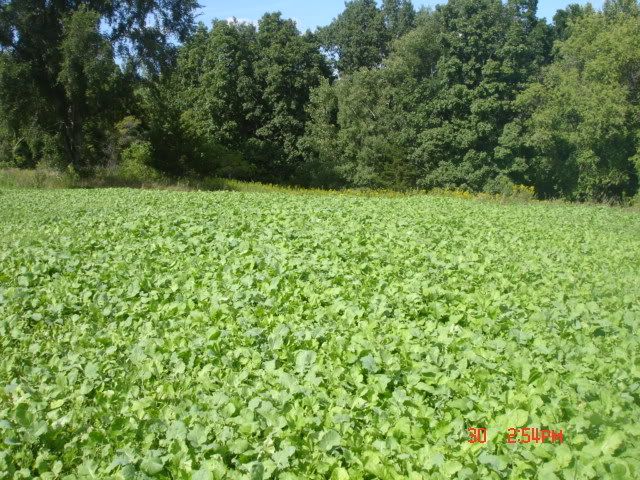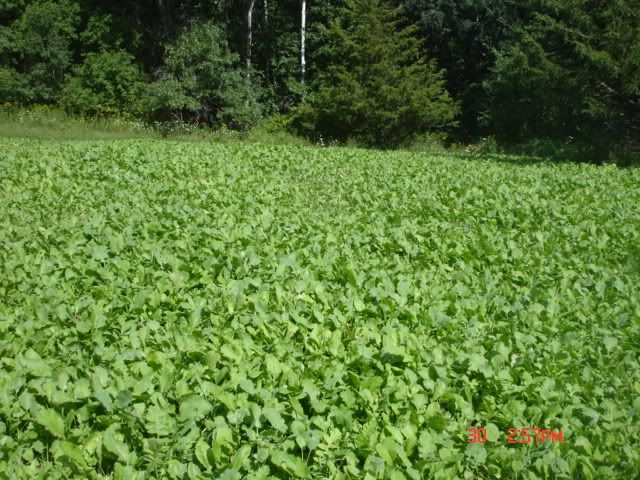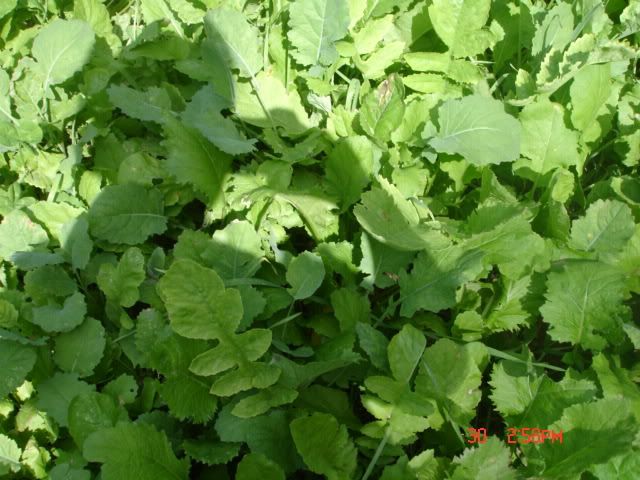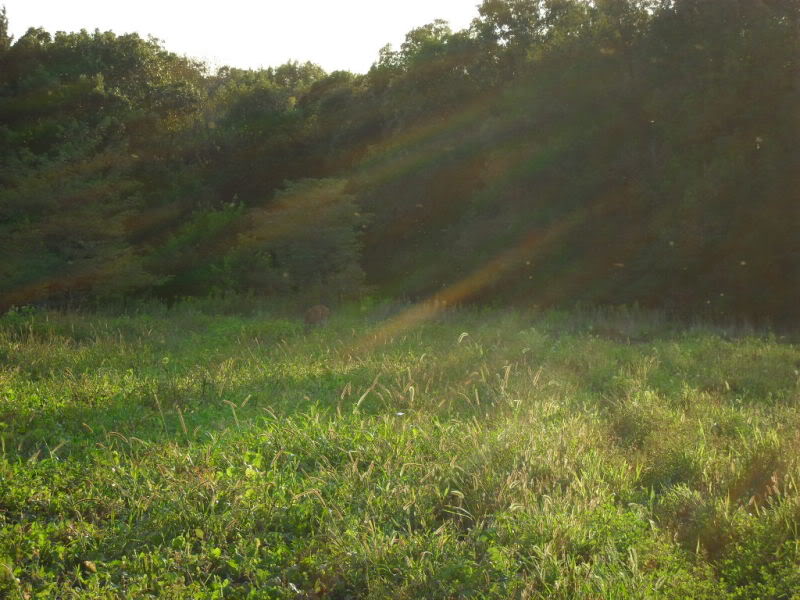Yikes! That's some serious water! Hope they dry out quickly and do well this fall for you!
They seem to be grazing the forage radish real well! The radish leaves are a litle "feathery" compared to the broader leaves of the rape and turnips but apparantly just as tasty. I have some Ground Hog radishes arriving today from Welter Seed to scatter into my cereal rye planting for both soil improvment and forage.
Notice the dark green very thick strip of grass next to the brassicas? I was careful not to spread urea into that area so the roots are just happily sucking it up from next door!
For best results in yield and quality of forage, brassicas should be planted in mid July thru early August in most of the midwest. They should also be fertilized heavily and a minimum of 60-90#'s per acre of actual nitrogen should be tilled in at planting time.
Planted properly in this manner brassicas will grow rapidly and quickly canopy (much like soybeans) making it nearly impossible for any other crop to be grown with them.
To plant them together means something is going to suffer and nutrients may go to the wrong plants at the wrong times.
I often plant oats and berseem clover in the spring as a cover crop to till under for the next planting, works great before a fall rye/pea planting or to establish clovers but it can pose a bit of a problem for brassicas.
The following are some pics of a brassica planting I did for a friend where I followed oats and berseem. The oats of course were maturing so tilling them under just spread oat seed everywhere and of course it just loves all the nitrogen tilled in for the brassicas.
Now...you might say...heck, that looks great! Deer should love that! Yep...for now, but these oats will be mature by October and useless to attract deer and during that time they will be sucking up nitrogen and other nutrients meant for the brassicas.
Not the end of the world of course and in this case grazing pressure will be light and side by side plantings of winter rye and peas along side of a large field of corn will still create an overall very attractive food source.
I could have killed these oats with clethodim if the situation required more/higher yields of brassicas but at this point on this property we're not even sure if they will eat brassicas.
I just wanted to share the problems associated with mixing grains with brassicas and I will continue to share pics this fall to give you an idea why seperate plantings are much more productive.
These oats will not be so tasty in November while the oats and rye we plant right now will be perfect.
no room in here for anything but brassicas!
Now if deer murder your brassicas early as they are mine, then broadcasting winter rye into them in early September will be fine because the brassicas have already been decimated.
This farm is also one where I wil be able to show you strip plotting and crop rotations and how they will work in anyones habitat program...better then planting single crop plots in different fields or attempting to throw a bunch of incompatiable seeds together all in one plot...



